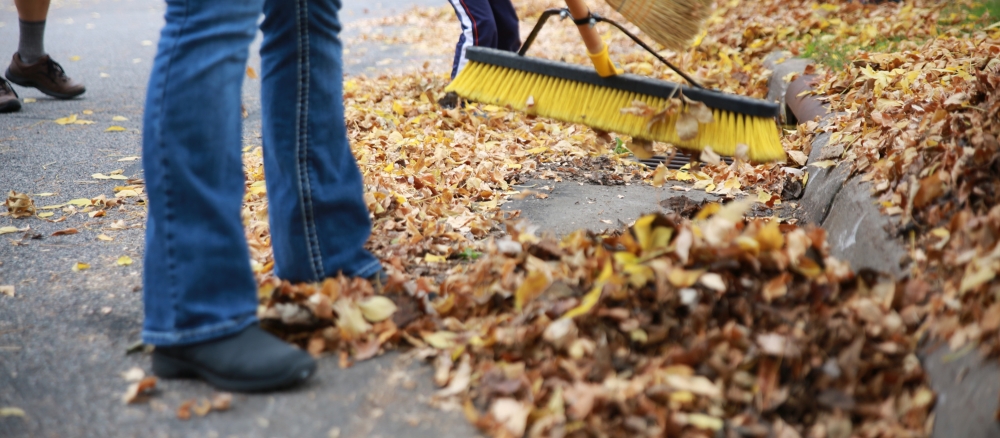The crunchy red, gold, and brown leaves fluttering to the ground this autumn might not look all that formidable, but they contain a wallop of nutrients that can hurt Minnesota’s lakes.
In a natural setting, leaves decompose on the ground where they fall and help restock the soil with nutrients and organic matter. The small amounts of leaves that naturally drop into lakes from surrounding trees don't have much of an effect.

But when leaves fall on streets, sidewalks, and other hardscapes in urban areas, they wash into municipal stormwater systems and end up in lakes and rivers where the leaves' nutrients feed algae growth. The algae then decompose and use up oxygen that fish and native plants need. When leaves from whole cities or neighborhoods wash into a lake, river, or stream through a storm sewer system, the volume of organic matter can overwhelm that body of water.
In the Mississippi River-Twin Cities Watershed, the MPCA monitored and assessed 180 lakes, and 80 of them didn’t meet water quality standards because of excess nutrients. Don't "leaf" it up to someone else to solve this problem! Here's what to do with your autumn leaves so that they nourish the soil and not unwanted algae.
Break out the rake
Rake up the leaves that accumulate along your curb and sidewalk and in your alley several times during the fall. Street sweeping in late fall helps keep a lot of leaves from entering the water. If your city doesn't already do this, encourage it to start! However, street sweeping can't be the only solution. Rake when you see leaves start to build up to keep them out of the storm drains. Never rake leaves into the street, even when you know the street sweeper is coming.
Broaden your impact
Consider adopting a storm drain or two in your neighborhood. Adopters sweep up leaves, trash, and other debris off the surface of their assigned drain throughout the year and report on how much debris they pick up. Keeping the drains clear not only cuts down the pollution going into lakes and rivers, it also helps prevent localized flooding. Visit the Adopt-a-Drain web site to find storm drains around the state that are waiting to be adopted.
Composting is best
So what should you do with the leaves you rake up? State law forbids putting yard waste in the regular trash, and burning leaves is also illegal in the Twin Cities metro area: It creates a lot of smoke that causes breathing problems for people with asthma and other conditions and leads to long-term health effects for all of us.

If you compost at home or in a community garden, you can use leaves in your bin. Your local yard waste or compost site will also likely take them. Contact your county for information on locations, items accepted, and any fees.
Whole or shredded leaves also can be used as mulch. Mulch benefits the soil and reduces weeds. Use a mulching blade in combination with a mulching plug on your lawnmower to finely cut the leaves so they fall between the blades of grass. Don't let the leaf layer get too thick! In garden beds, leaves provide a protective layer of insulation for perennial gardens and shrubbery, either bagged or loose. Read these additional tips for mulching from Minnesota Extension.
Choose convenience
Your garbage hauler may separately collect yard waste — sometimes for an additional fee — and take it to a commercial compost site. Contact your hauler to learn about your pick-up options.
Go ahead and jump
Before bagging or moving the leaves, jump in them! Feel and hear the crunch and rustle of the leaves. If you have kids, select some leaves for craft projects. Share your pile by leaving it on the lawn near the sidewalk for a few days with chalk note that says, "jump!" There are many benefits to playing outside. Soak in the fall while it lasts!
